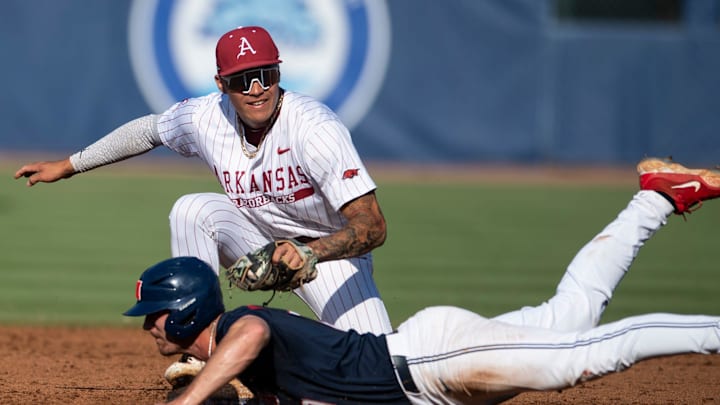With Mizzou baseball’s season officially in the books — for all the wrong reasons — I figured it was the perfect time to look back at the worst conference records in each SEC team’s history. Just a little something to lift everyone’s spirits.
Disclaimer: Due to rule changes over the years and teams shifting conferences, not all have played a full 30-game SEC schedule. These records reflect each team’s worst conference finish in a season with at least 24 games.
Arkansas: 7-23 (2016)
The only season during the Dave Van Horn era in which Arkansas failed to win at least 10 SEC games was 2016 — a rare down year for the program. It came on the heels of 14 consecutive NCAA Regional appearances and just before a stretch in which the Razorbacks hosted three straight regionals, reached Omaha twice and finished as national runner-up once. In 2016, Arkansas posted the worst RPI ranking in program history at No. 124 and recorded the second-worst run differential in its history.
You couldn’t say Arkansas couldn’t hit — the Razorbacks finished with a .275 team batting average. One of their biggest issues, however, was strikeouts, averaging nearly two (1.9) strikeouts for every walk. While they ranked near the top three in the SEC in home runs, they fell to the middle or bottom of the conference in most other offensive categories. The lineup was anchored by four players who appeared in 50 or more games. The standout was redshirt sophomore Carson Shaddy, who led the team in batting average (.332), slugging percentage (.521) and OPS (.921). The other three in that core group each hit above .270, giving the Razorbacks a solid offensive foundation. Supporting them was a group of 10 players who saw action in at least 20 games and combined to hit .255.
Pitching was Arkansas’ downfall in 2016, as the Razorbacks finished last in the SEC in ERA (5.00), earned runs allowed (269) and WHIP (1.53). The makeup of the staff was unusual. It was led by junior Dominic Taccolini and sophomore Keaton McKinney, both of whom finished with a 5.75 ERA+. The staff leaned heavily on underclassmen — only seven of the 18 pitchers were upperclassmen.
That didn’t mean they lacked quality arms. Three of their next top starters — all freshmen who made more than five starts — finished the season with ERAs under 4.00, including one below 3.00. Additionally, all three pitchers who appeared in over 20 games — all upperclassmen — also recorded ERAs below 4.00.
But that’s where the depth ran out. After those five key contributors and one more freshman with a 2.98 ERA, the next-best qualifying ERA on the team was over 5.00. The Razorbacks had capable pitching, but it wasn’t sustainable over the course of the season — and the lack of reliable depth is ultimately what sank them.
